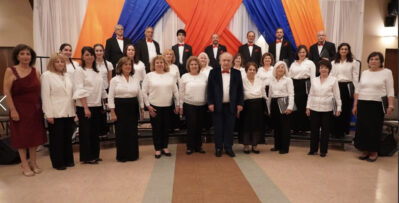By Chris Bohjalian
You know your moral compass is a little off when you censor a story about a gift to a US president from a group of orphans — even though that story makes your grandparents and great-grandparents look like Mother Teresa.
But this is essentially what the White House Visitor Center did for six days in November. After a year of congressional pressure and the pleas of Armenian-Americans, the White House pulled the Ghazir Orphan Rug from storage and allowed us to see it — but swept under the rug an explanation for its origins.
On the surface, it’s hard to understand why it should have taken such a Herculean effort to allow the rug to see daylight in the first place. Here is the abridged story of the carpet. During the First World War, the Ottoman Empire systematically annihilated 1.5 million of its Armenian citizens, ethnically cleansing its Armenian minority from almost all of what today we call Turkey. Three out of every four Armenians living in the Ottoman Empire were killed. Americans were horrified by the slaughter as it was occurring, and a newly organized American group, Near East Relief, tried to save the survivors of the genocide — including the children, scattered now across the Middle East. The group’s accomplishments, especially the 135,000 orphans it cared for, were breathtaking.
And among the thanks to America from those orphans was … the rug. It was woven by a group of Armenian orphan girls from the orphanage in Ghazir, Syria (now Lebanon) and designed to be worthy of a world leader. It was. It’s massive and beautiful. It was presented to President Coolidge on Dec. 4, 1925. A year later, two of the Armenian girls who helped weave the rug journeyed to Washington and met the Vermont-born president.







